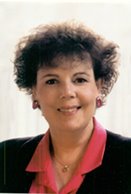If your fabric is cut right, it's half the battle. A rotary
cutter is brilliant for accurate cutting, as is a good quality cutting ruler. I prefer Omingrip non-slip rulers - the green ones. They doen’t slip and slide and the marking system
is really versatile and useful. Lines on cutting rulers can be heavily marked –i.e.
they are thick rather than thin. So, when I am cutting, I usually use the
outside of the line as my guide, rather than the inside. It’s only a thread or two difference but it
definitely gives a more accurate cut.

Piecing
Investing in a specialist ¼” foot for piecing is a
really good idea. My biggest issue in sewing a consistent seam is making sure the
end of the seam is accurate as it is easy for your fabric control to slip a
little as the last bit feeds through. The solution: a bamboo skewer! The kind you use in the kitchen. Use
them to control the feed of fabric at the end of your seams and for lovely
accurate seams! Maintaining a consistent seam allowance is one of the fundamental
skills of quilting.
I don’t pin my fabric when I am piecing small blocks, but I
do pin when I am piecing anything fairly large, and I always pin
when I am matching seams. I match my fabric at exactly the right point, and I
pin as close as possible to the meeting point on both sides – usually its about 1/8” on either side of the seam.Be sure to remove the pins before sewing.
Pressing
 I love steam and use it often. One major word of caution, PRESS do not iron. I usually finger press (using my handy dandy screwdriver) as I piece. But there is nothing wrong with using a dry iron
for pressing.
I love steam and use it often. One major word of caution, PRESS do not iron. I usually finger press (using my handy dandy screwdriver) as I piece. But there is nothing wrong with using a dry iron
for pressing.










No comments:
Post a Comment